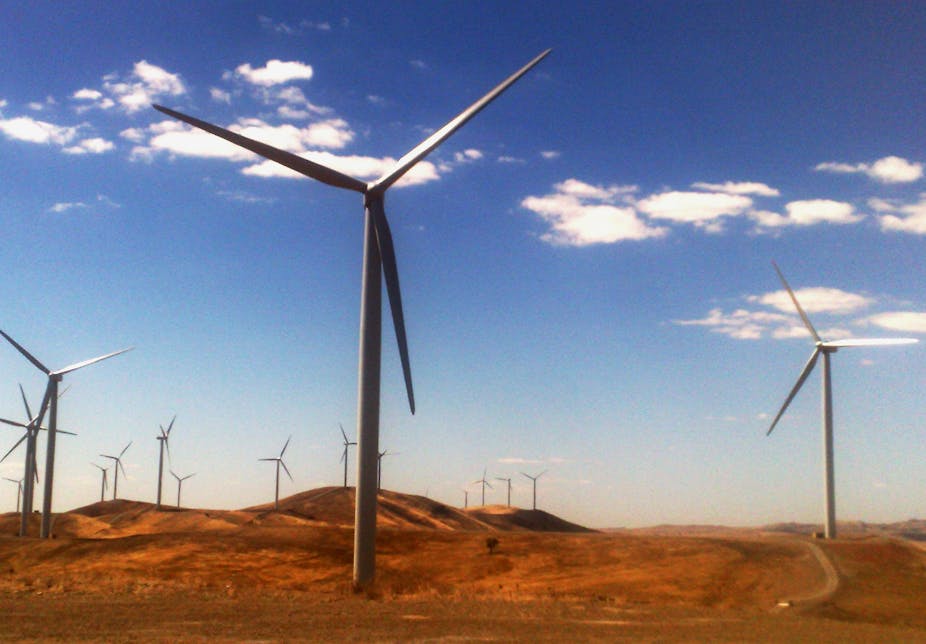The Climate Change Authority has recommended that the government move back the deadline for the large-scale Renewable Energy Target by three years, from 2020 to 2023, rather than risk jeopardising investment by reducing the target itself.
The recommendation was made in one of two reviews released by the authority today, covering two climate policies: the Renewable Energy Target (RET), and the now defunct Carbon Farming Initiative (CFI) together with its successor, the Emissions Reduction Fund (ERF).
Renewables: defer, don’t cut
The CCA’s key recommendations for renewables are that the large-scale RET, which calls for Australia to have 41,000 gigawatt hours of renewable energy capacity by 2020, should be maintained, but the target year deferred by three years. Meanwhile, the authority recommends that the small-scale Renewable Energy Target, which offers subsidies for domestic solar power, should be left as it is.
The recommendations contrast with the Warburton review of the RET, released in August, which called for cuts to the large-scale target, and the government’s subsequent policy announcement that it wanted to cut the target to around 27,000 GWh.
The new review carefully points out that the original RET objective was for renewables to deliver at least 20% of the then-projected electricity supply by 2020. But the authority adds that it does not see anything “magic” about the idea of implementing a so-called “real 20%”, or indeed in targeting any particular percentage of future demand.
The CCA has emphasised the importance of stable signals for the growth of renewable electricity to limit greenhouse gas emissions, and the risks for both the renewable industry and society created by uncertainty over the target.
The review says that slashing the RET will do little to solve the current problems of excess electricity generation capacity, in that it won’t save the existing electricity generators from the pain of managing excess capacity.
Indeed, it seems obvious that, if the RET is cut, the electricity industry, governments and some commentators will lose a convenient scapegoat, and will be exposed to even more sceptical public scrutiny over electricity prices. Meanwhile, renewable energy growth would lose its momentum, at significant cost to Australian efforts to cut greenhouse gas emissions.
While the government seems likely to ignore the CCA’s advice, its efforts to protect the existing electricity industry by attacking renewable energy seem doomed to failure. Already, several state and territory governments (such as those of the ACT and South Australia) and consortia of local councils (including the City of Melbourne and others) are filling the gap by seeking bids for renewable electricity supply.
Meanwhile, the takeup of rooftop solar panels continues to grow, while electricity demand continues to decline. Multi-level democracy at work!
Keep farming carbon
In its other review released today, the CCA concludes that the original Carbon Farming Initiative – which provided incentives to cut emissions in sectors such as agriculture, landfill and forestry that are unsuited to carbon trading – did its job reasonably well.
Established by the previous government to complement carbon pricing, the review estimates that the initiative cut Australian greenhouse gas emissions by 10 million tonnes in its four years of operation. But the authority says it involved intense administrative work and had high transaction costs.
CCA observes that many lessons seem to have been taken on board from the CFI for application to the government’s new Emissions Reduction Fund, which is basically an expansion of that approach. However, the ERF is still an administratively complex, expensive and risky approach with limited potential to cut emissions beyond a few percent.
The Authority recommends that extra attention be paid to ensuring that larger projects actually deliver emissions cuts beyond what would have happened anyway: otherwise Australian tax payers would just be paying for “hot air”.
Unwelcome advice?
Both of the CCA’s reports seems to confirm the view that “polluter pays” policies such as carbon pricing are more efficient, cheaper and more effective than “pay the polluter” policies such as the ERF. Given that the government this year repealed the carbon price and introduced the ERF, the government is hardly likely to welcome this advice.
It is unfortunate that these two reports, along with several other important reports (such as Pitt&Sherry’s building energy regulation report), have been released just before Christmas, when many specialist media commentators are on leave and many people’s attentions are focused elsewhere.
Of course, this is a long-held tradition among governments of all persuasions, aimed at minimising the negative impacts of inconvenient information. We will have to wait until the new year to see whether the government heeds the Climate Change Authority’s advice.

